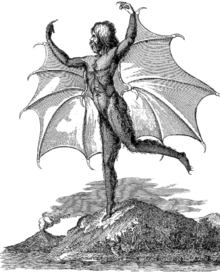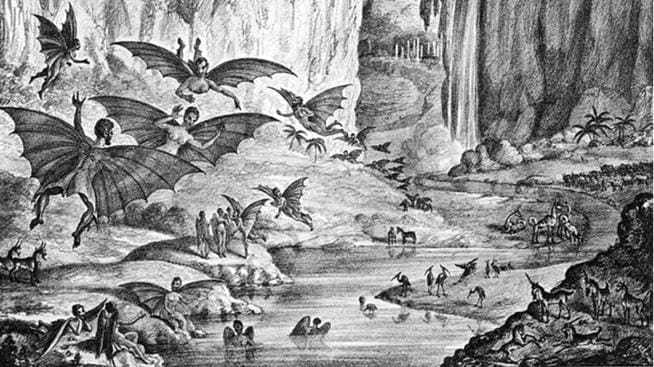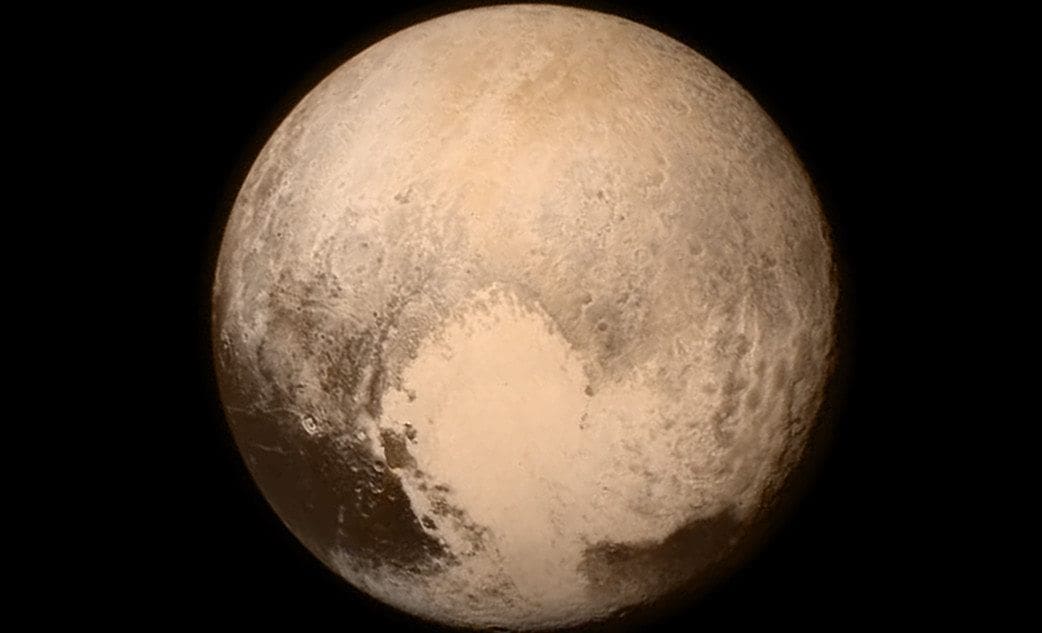We’ve all seen the stories by now. “Ghost Woman found on MARS!” or “Giant Crab found on MARS!” Considering that Mars is solely inhabited by robots, neither woman nor crab is actually there.
And by now, we’ve all heard the reason why: a phenomenon called pareidolia. It’s the same reason we see unicorns and dinosaurs in clouds, or Jesus on a tortilla. Our minds are designed to find a pattern in the chaos, once a needed evolutionary tool to stay alive and away from predators, now a pleasant quirk of the brain that can lead to hours of lazy fun (or months of fanatical behavior, depending on what you see).
In the days of the internet, it’s fairly easy to discredit those touting the pictures as proof of life on Mars. But what about when it wasn’t so easy? Before the age of computers, word travelled slowly out to the panicked masses. Best case scenario, you saw it in the paper a few days later, or heard a correction on the radio later that night. Obviously, the Orson Welles War of the Worlds springs to mind first, yet there is an older, lesser known “science” hoax that is much more interesting.
It’s known as The Great Moon Hoax of 1835, a series of six articles that appeared in the NY Sun in August of 1835 describing the strange and fantastical things a team of scientists had observed with a new telescope located in South Africa at the Cape of Good Hope. At first glance, that doesn’t raise much suspicion. Telescopes were definitely a thing in 1835, as were scientists. And anyone with the money and knowhow to afford a telescope and be involved in the sciences was rightly looking at our nearest celestial neighbor. However the content of the articles soon gave the game away.
The first article appeared on August 25th, 1835. It was supposedly a reprint from a paper called the Edinburgh Courant, which led even more credence to the thing. After all, all good science at the time was being done by those from Europe and England (it was the classical view of How Things Were Done). The article spoke of a marvelous telescope used by Sir John Herschel to make these new discoveries. Sir John Herschel was, in fact, a real person, and a real astronomer. His father was Sir William Herschel, the man who discovered the planet Uranus. The original series from the Edinburgh Courant was supposedly written by Dr. Andrew Grant, a former student of the elder Herschel and now a research partner of the younger.
Nearly the whole first article was dedicated to a description of the telescope Herschel and “the scientists” used, a very specific description. Today, too-specific information is the hallmark of a lie, but to the establishment trusting and science hungry public of 1835, it was everything they expected from an expert account. The telescope was said to be massive, 24 feet in diameter, which really is impressive, as the largest telescope today is California’s Mt. Palomar observatory, and it’s only 17 feet in diameter. Herschel’s telescope also had an amazing second lens, the “hydro-oxygen microscope” that helped magnify and project images from the telescope onto a wall screen. Which is handy, as you wouldn’t want to make all your Moon discoveries with your face pressed against an eyepiece.
The second day, the descriptions of the newly discovered lunar landscape really started to kick in, beginning with: Moon rocks. So far, not so revolutionary, the Smithsonian is full of them. But it was the description that was amazing.
“…the field of view was covered throughout its entire area with a beautifully distinct, and even vivid representation of basaltic rock. Its color was a greenish brown, and the width of the columns, as defined by their interstices on the canvass, was invariably twenty-eight inches.”
Twenty-eight inches you say? That’s a specific telescope you’ve got there. The article went on to describe plant life on those rocks, red flowers that were “precisely similar” to rose-poppies. And then, they discovered the first animal life on the Moon. Described as goat-sized bison, with a single horn that sprang around like a kitten. They also observed birds eating fish out of streams, thus proving the Moon had both birds and fish. Also, water.
The first few descriptions were suspect mostly for that fact that everything seemed to resemble something here on Earth. It’s understandable as a method of description, but the exact sameness would’ve sent up some red flags for me and many others today. Still, flowers and Moon goats is nothing compared to what followed.
Day three started off normal enough, describing canyons and other geological figures, close to the way we talk about the Moon today. Dr. Herschel and “the scientists” spent the day identifying more fauna (38 kinds of trees and double the number of plants, if you were wondering) before stumbling on the next bit of lunar life: the bipedal beaver. It walked on two legs and carried its young in its arms like a human would. Oh, and they lived in huts, which had smoke coming out of them, so obviously, the beavers had mastered fire.
Day four is where things got turned up to eleven. If you think single-horned Moon goats and space beavers with fire is stretching credulity, get ready for bat-people (named Vespertilio-homo or, man-bat, by the scientists). Yes, on day four of this series, the author started describing Dr. Herschel’s most amazing discovery so far, the first human-like creatures glimpsed on the Moon.
“They averaged four feet in height, were covered, except on the face, with short and glossy copper-colored hair, and had wings composed of a thin membrane, without hair, lying snugly upon their backs, from the top of their shoulders to the calves of their legs.”
They even witnessed these bat-people having conversations, thus proving they were rational creatures.

As though finally realizing that this might be a bridge too far, the author included a passage stating that various church representatives had been invited to witness the bat people themselves. After having the sign off from the clergy, they continued on with their findings.
Day six was a bit of a problem for the author. Because how do you top bat-people? By introducing amazing and mysterious temples, that’s how! Day six gave the discovery of an abandoned temple built completely of sapphire, with a polished roof that supposedly looked like fire. The scientists pondered whether this fabulous Moon temple was in commemoration of some sort of disaster there, or possibly a portent of disaster here on Earth? But, as such nice, science minded gentlemen, they decided not to include their world-ending theories in the article, as there was no proof.

On August 31st, the series of articles came to a close with the sixth installment. The telescope had found a “greater order” of the bat-people living near the mysterious apocalyptic temple. They were “of a larger stature than the former specimens, less dark in color, and in every respect an improved variety of the race.” They witnessed them doing bat-people things; collecting food, bathing, and lounging around.
As they observed, they noticed that the species of the Moon seemed to live together in harmony and noted no instances of carnivorous activity (except for the birds eating the fish, which they seemed to have forgotten about). In fact, the Moon seemed to be this lovely utopia. They mused on that for a time before shutting the telescope down for the night. Or so they thought. They returned the next morning and found that the lens had been left to reflect the rays of the sun and a small fire started in their observatory. By the time they repaired the damage, the Moon had moved along and was “now invisible.” A likely story.
Later in the month, when the Moon came back into position, they got a chance to observe a bit more, specifically the bat-people. But the author was disinclined to say what else they discovered, and finished the piece promising: “I shall, therefore, let the first detailed account of them [Vespertilio-homo] appear in Dr. Herschel’s authenticated natural history of this planet.” Unsurprisingly, such a natural history never materialized.
The whole series was peppered with “adjustments” of the telescope and other scientific jargon to give it credibility. It was so popular that other newspapers and publications reprinted it for their readers. Public opinion was split on whether people believed it or not, so at least that past isn’t as gullible as we’ve been led to believe. There was much public discussion as the story made the rounds and after a while, it was given up as a hoax.
Sir John Herschel, of course, had no idea any of this was going on until a few months later when a traveler gave him a newspaper to show him the story. He was indeed studying in South Africa at the time, but that was about the only thing the actual Herschel had in common with the one from the articles. At first, he wasn’t bothered by it much, but that soon changed. The Moon Hoax dogged his scientific career for the rest of his life, and Herschel often received questions about his work in reference to the articles.
Eventually, the hoax fell out of the public consciousness like anything does and it was resigned to a quirky patch of history. The whole text can still be read at: http://hoaxes.org/text/display/the_great_moon_hoax_of_1835_text/
The whole article is 17,000 words long (that’s about ten times longer than this article) and full of confusing old-timey language that’ll make your eyes cross. If you want to have a go at it, you are better than I. Stuff You Missed In History Class also has an amazing two-part podcast about the hoax. If you’re interested in learning more, that’s a great place to start.
Stuff You Missed In History Class, The Great Moon Hoax of 1835
Part 1: http://www.missedinhistory.com/podcasts/the-great-moon-hoax-of-1835-part-1/
Part 2: http://www.missedinhistory.com/podcasts/the-great-moon-hoax-of-1835-part-2/
Comes from the world of fiction and likes writing about superheroes.





























